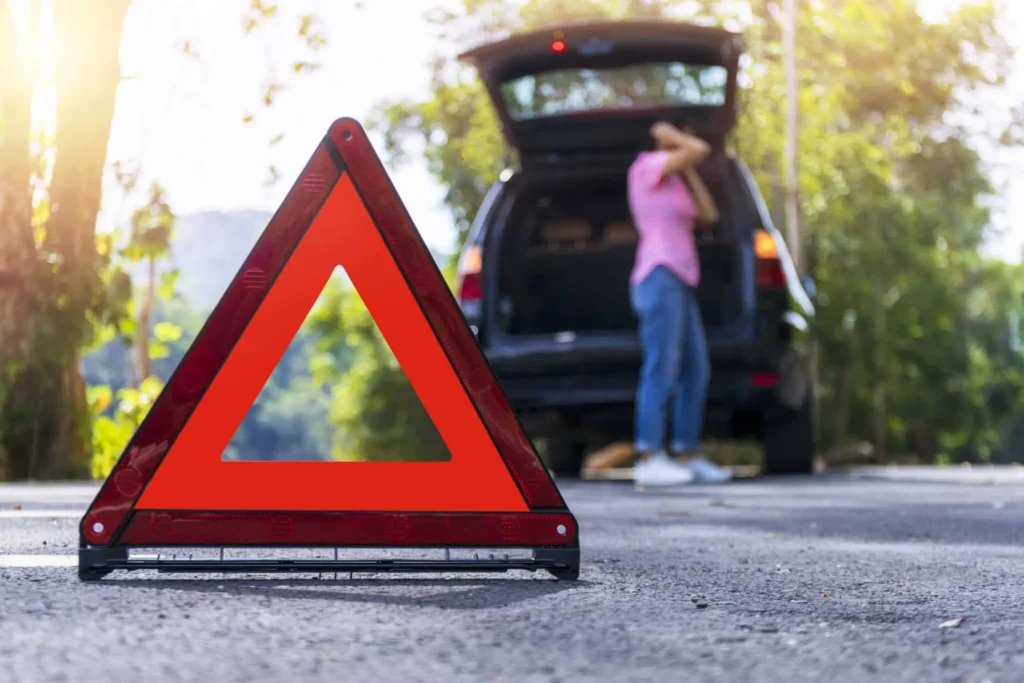Roadside stops while driving are inevitable and can be for a variety of reasons, from planned breaks and rest stops to unexpected emergencies.
How drivers behave at these stops has a major impact on their safety and the well-being of other road users.
Conditions of roadside stop
In this report, we look at the various conditions that may require a traffic stop, driver precautions, and the importance of responsible behavior to ensure a safe and efficient experience.
1. Planned rest stops:
Planned rest stops are common on long journeys. Drivers understand the importance of taking breaks to combat fatigue, maintain focus, and promote overall well-being. Identifying suitable rest stops or gas stations along the route is essential for a planned and safe roadside stop. During these stops, drivers can stretch, hydrate, and refresh, ultimately contributing to safer and more attentive driving.
2. Emergency Stops:
Emergency stops, on the other hand, are unplanned and are often caused by unexpected vehicle problems, health problems, or other unforeseen circumstances. For example, a flat tire, engine failure, or an unexpected illness. Handling emergency shutdowns requires quick thinking, awareness, and following safety protocols to minimize risk and ensure the problem is resolved quickly.
3. Selection of safe places:
Regardless of the reason for stopping on the side of the road, choosing a safe place is of primary importance. During scheduled stops, drivers should aim for reserved rest areas, gas stations, or other well-lit and populated areas. In emergencies, drivers must first find a safe place away from traffic, such as the side of the road, ramp, or parking lot, to reduce the risk of accidents and ensure the safety of all involved.
4. Emergency Equipment and Tools:
Carrying essential emergency equipment and tools is a proactive measure to deal with unforeseen problems while on the roadside. This includes things like a spare tire, a jack, jumper cables, a first aid kit, and a flashlight. Drivers should familiarize themselves with these tools and ensure they are in good working order before starting their journey. Preparation improves the ability to deal with small problems independently and makes it easier to smoothly resolve unexpected challenges.
5. Correct signals and hazard lights:
Whether it’s a planned rest stop or an emergency, the correct signals are crucial to communicating your intentions to other road users. Activated hazard lights warn approaching drivers of a stationary vehicle, which reduces the risk of a collision. In addition, the use of reflective triangles or flares improves visibility in emergencies and provides an additional layer of safety during stops, especially in the dark.
6. Ensuring Personal Safety:
Personal safety must be a top priority at all road stops. When leaving the vehicle, the driver must be careful, look at the oncoming traffic, and consider the surroundings. If the situation calls for getting out of the vehicle, moving to the side away from traffic and standing on the shoulder or behind the booms ensures a safe distance from passing vehicles.
7. Communication and Emergency Services:
In an emergency, effective communication is essential. Drivers must have a charged mobile phone and the necessary emergency numbers at hand. Communicating the nature and location of the emergency to the emergency services will help them respond quickly and ensure the right help is dispatched. It is also recommended to keep a list of emergency contacts in the vehicle.
8. Vehicle maintenance:
Regular vehicle maintenance can significantly reduce the likelihood of unexpected breakdowns. Drivers should regularly check their vehicles, including tires, brakes, fluid levels, and lights, to identify potential problems before they escalate. Preventive maintenance reduces the chance of unexpected roadside stops due to mechanical failure.
9. Traffic Law Enforcement:
Roadside stops require strict enforcement of traffic laws to maintain the safety of all road users. Parking in designated areas, proper use of hazard lights, and following the rules will all contribute to a safer roadside experience. Violating traffic rules during a stop can cause accidents, impede the flow of traffic, and pose risks to both the stopped vehicle and passers-by.

10. Reducing fatigue during planned stops:
About planned rest stops, reducing driver fatigue is the main objective. Activities such as stretching, walking, or even short naps can refresh a driver and improve alertness. Adequate rest during planned stops is crucial to maintain concentration and prevent drowsiness, which is a major factor in traffic accidents.
Conclusion
Roadside stops while driving are an important part of responsible and safe traffic behavior. Whether it is a planned rest stop or an emergency stop, it is important to prioritize safety, choose appropriate locations, and follow traffic rules. Drivers must be proactive in maintaining their vehicles, equip themselves with emergency equipment, and prepare to communicate effectively in the event of unexpected problems. By adopting responsible practices and promoting a culture of safety, drivers promote their own and the general well-being of other road users and ensure that roadside stops are driven with care, efficiency, and consideration.
